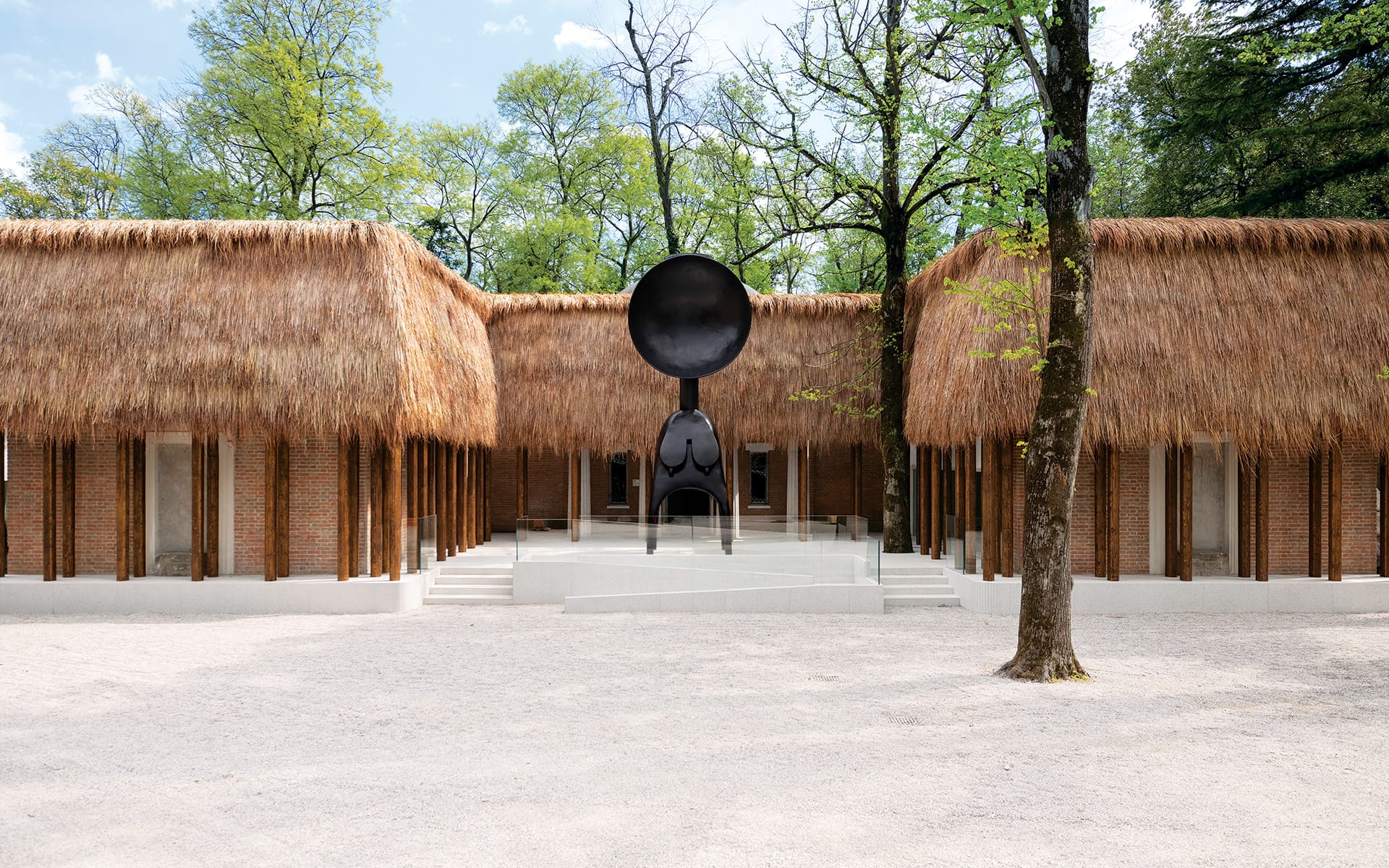Discover 5 of the Most Powerful Works by Artist Simone Leigh
A major survey at the Hirshhorn in D.C. showcases the artist’s powerful body of work exploring the Black female experience

Now through March 3, a major survey at the Hirshhorn Museum and Sculpture Garden in Washington, D.C., showcases the artist’s powerful body of work exploring the Black female experience. Below, take a look at her profoundly moving oeuvre.

1. Untitled, (2009)
Simone Leigh describes her practice as “auto-ethnographic,” employing art traditions that hail from Africa, as well as premodern techniques such as lost-wax casting and salt-firing ceramics. This porcelain and wicker piece reveals her mastery of the medium and unique artistic language.

2. My Dreams, My Works, Must Wait till After Hell…, (2011)
Teaming up with artist Chitra Ganesh in a duo called Girl, Leigh challenged the classical depiction of a reclining female nude with this video work that features a Black woman whose entire head is obscured by a pile of small stones. The title comes from a poem by Pulitzer Prize–winning poet Gwendolyn Brooks.

3. Hortense, (2016)
Crafted with terra-cotta, India ink, porcelain, glass beads, 14K gold luster, and epoxy, Hortense belongs to the artist’s “Anatomy of Architecture” series, which she began in 2016. Hovering between figuration and abstraction, it beautifully blends forms inspired by the human body, architecture, and the domestic space.

4. Brick House, (2019)
Awarded Manhattan’s first High Line Plinth commission, Leigh constructed her monumental Brick House, a 16-foot bust of a Black woman that marked her first time using bronze. That year, as winner of the 2018 Hugo Boss Prize, she also presented an exhibition of new sculptures at the Solomon R. Guggenheim Museum in New York.

5. Sovereignty, (2022)
As the first Black woman to represent the U.S. at the Venice Biennale, in 2022, Leigh’s exhibition “Sovereignty” included the transformation of the historic pavilion’s neoclassical façade with thatched roofing that resembled a 1930s West African palace. Outside, the towering figure, titled Satellite, recalled a traditional D’mba headdress used during ritual performances by the Baga people of Guinea.

6. Herm, (2023)
Following its debut at the Institute of Contemporary Art/ Boston, Leigh’s survey is on view at the Hirshhorn Museum and Sculpture Garden in Washington, D.C., through March 3, 2024. Herm is one of three new sculptures. “To stage this exhibition is to insist upon the consideration of Black women’s stories as central to our national dialogue,” says the Hirshhorn exhibition’s curator, Anne Reeve. “The show reveals the full maturity of her power and practice.”